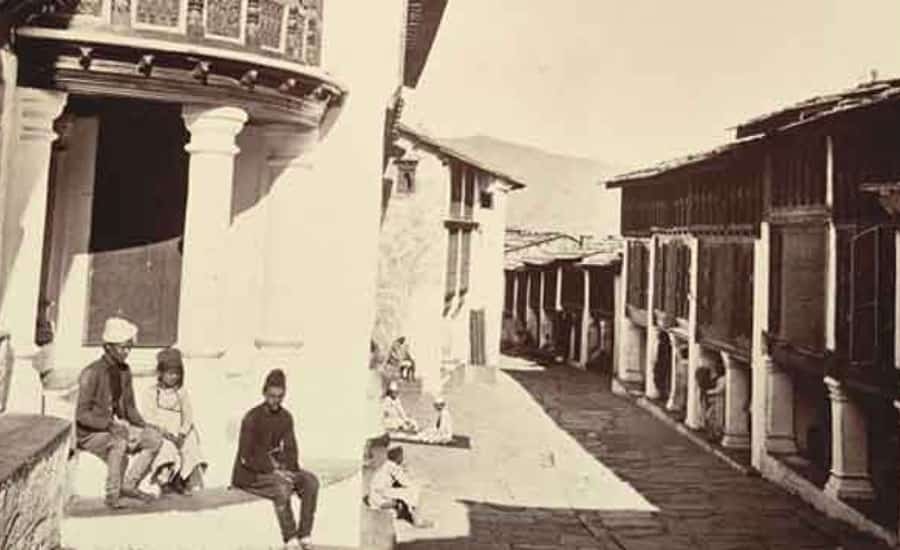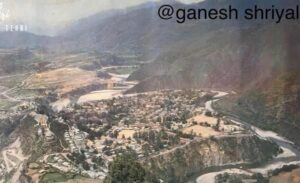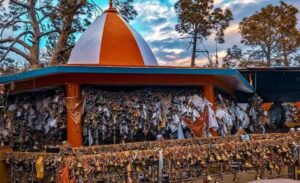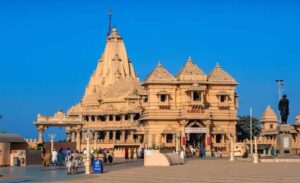History of Almora
Nestled in the Kumaon region of Uttarakhand, India, Almora stands as a testament to the rich tapestry of history that has unfolded in this picturesque town over the centuries. From its ancient roots to its colonial past and beyond, Almora has witnessed the ebb and flow of civilizations, leaving behind a legacy that resonates with cultural, religious, and historical significance.

Ancient Roots: Prehistoric Almora
The history of Almora can be traced back to ancient times when the region was inhabited by various indigenous communities. The archaeological evidence suggests that the area around Almora has been inhabited since prehistoric times, with artifacts and rock paintings providing glimpses into the lives of the early settlers. These early inhabitants, with their rudimentary tools and simple lifestyles, laid the groundwork for the vibrant cultural mosaic that would later define Almora.
The Kumaon Kingdom: Medieval Almora (7th-16th Century)
The medieval period saw the rise of the Kumaon Kingdom, which played a pivotal role in shaping the history of Almora. The Katyuri dynasty, believed to have originated in Katyur Valley (present-day Baijnath), established its rule in the region during the 7th century. Almora, with its strategic location, became a significant center for trade and commerce.
The Katyuris were succeeded by the Chand dynasty in the 11th century, further enhancing the cultural and architectural landscape of Almora. The region flourished under the Chand rulers, who were patrons of art and culture. Temples and forts were built, leaving an indelible mark on the landscape of Almora. The architectural marvels of this era, such as the Katarmal Sun Temple, stand as testament to the artistic prowess of the Chand rulers.
The Gorkha Rule: 18th Century
The 18th century brought about a significant shift in the history of Almora with the emergence of the Gorkhas. Led by the ambitious Prithvi Narayan Shah, the Gorkhas expanded their territories and eventually conquered Almora in 1790. This marked the end of the Chand dynasty’s rule in the region.
Under Gorkha rule, Almora witnessed both cultural assimilation and resistance. The Gorkhas, while imposing their authority, also adopted certain elements of the local culture. However, discontent brewed among the local population, leading to a series of uprisings against Gorkha rule.
The British Era: 19th Century
The British East India Company, in its quest for territorial expansion, engaged in the Anglo-Nepalese War in the early 19th century. The Treaty of Sugauli in 1815-16 resulted in the British gaining control of Almora and much of the present-day Uttarakhand region. Almora became part of the British Indian territories, ushering in an era of colonial influence.
During the British era, Almora evolved into a hill station and administrative center. The British, recognizing the strategic importance of the region, established schools, churches, and administrative buildings. The colonial imprint on Almora’s architecture is still visible in structures like the Court Building and the Collector’s Office.
Cultural Renaissance: Late 19th to Early 20th Century
The late 19th to early 20th century witnessed a cultural renaissance in Almora. Visionaries like Swami Vivekananda and Aurobindo Ghosh visited the town, seeking solace in its serene environment. Swami Vivekananda, in particular, spent substantial time in Almora, meditating in the caves of nearby Mayawati Ashram. His teachings and philosophy left an indelible mark on the spiritual ethos of the region.
Post-Independence Period: 20th Century Onward
With India gaining independence in 1947, Almora became part of the newly formed state of Uttar Pradesh. In 2000, Uttarakhand was carved out of Uttar Pradesh, and Almora became a district within the new state. The town continued to be a hub of cultural and religious activities, attracting pilgrims and tourists alike.
In recent decades, Almora has faced challenges related to urbanization, environmental conservation, and sustainable development. Efforts have been made to strike a balance between preserving the town’s historical charm and meeting the demands of modernity.
Cultural Heritage and Tourism
Almora’s cultural heritage is reflected in its temples, traditional architecture, and vibrant festivals. The Nanda Devi Temple, dedicated to the patron goddess of the Kumaon region, is a prominent religious site. The town’s distinctively shaped public square, known as the ‘Chowk,’ is a hub of social and cultural activities.
The picturesque landscapes surrounding Almora, including the panoramic views of the Himalayas, attract nature lovers and adventure enthusiasts. The town has become a popular destination for those seeking a blend of cultural exploration and natural beauty.
Conclusion
Almora’s history is a fascinating journey through the ages, marked by the rise and fall of dynasties, cultural exchanges, and the enduring spirit of its people. From its ancient roots to the colonial era and post-independence period, Almora stands as a living testament to the resilience of a town that has weathered the tides of time. As it continues to evolve in the 21st century, Almora remains a jewel in the crown of Uttarakhand, inviting visitors to explore its rich history and experience the serenity that has captivated generations.
Also Read:







